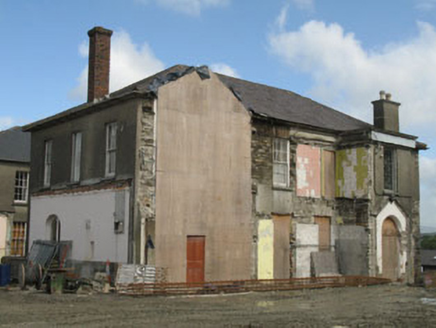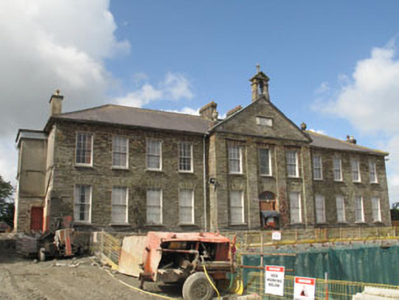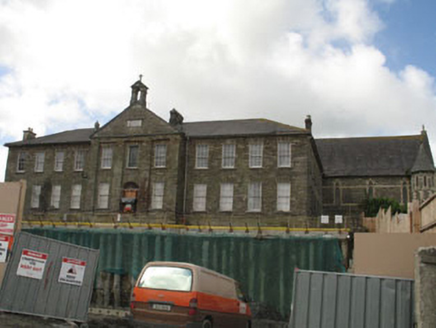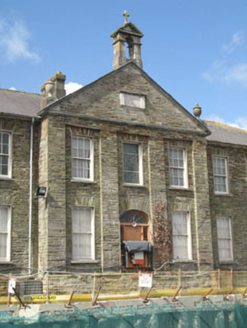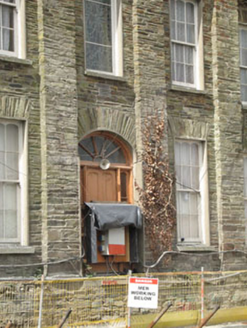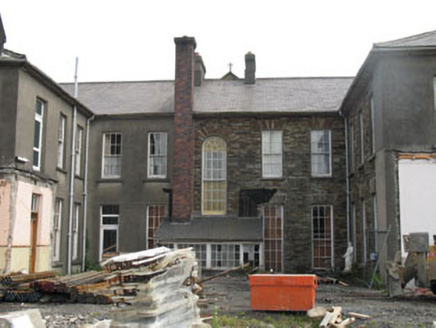Survey Data
Reg No
20841054
Rating
Regional
Categories of Special Interest
Architectural, Artistic, Historical, Social
Original Use
Convent/nunnery
Date
1840 - 1860
Coordinates
112449, 34014
Date Recorded
25/06/2008
Date Updated
--/--/--
Description
Attached eleven-bay two-storey U-plan Roman Catholic convent, built c.1850, having three-bay two-storey pedimented breakfront and incorporating fabric of earlier church. Single-storey lean-to extension (south-west). Now undergoing refurbishment. Hipped and pitched slate roofs with rendered and red brick (rear) chimneystacks, decorative clay chimneypots, eaves course and cast-iron rainwater goods. Cupola with finial and urn acroteria to breakfront pediment. Rubble stone walls with pilasters to breakfront. Rendered walls to south-east and south-west elevations of north-west wing. Plaque to pediment gabled breakfront. Square-headed openings having six-over-six timber sliding sash windows with stone and concrete sills. Square-headed opening with lead fixed pane stained glass window to central breakfront bay. Round-headed opening to rear (south-west) central bay having rendered reveals and margined nine-over-nine timber sliding sash window with margined spoked fanlight. Round-headed door opening (north-east) with timber panelled door, spoked fanlight, timber glazed sidelights and raised rendered reveals. Square-headed door openings to rear and side elevations having timber panelled and uPVC doors with overlights. Round-headed opening to rear of south-east wing having timber double-leaf French windows.
Appraisal
This imposing building forms part of an architecturally significant ecclesiastical complex located at the north edge of Skibbereen. Built in the Classical style and incorporating a striking pedimented breakfront, this fine structure exhibits much architectural merit. The retention of the various delicately proportioned and finely carved timber sliding sash windows maintains the integrity of the façade. This collection of related structures forms a pleasing and historically interesting grouping in the townscape.
